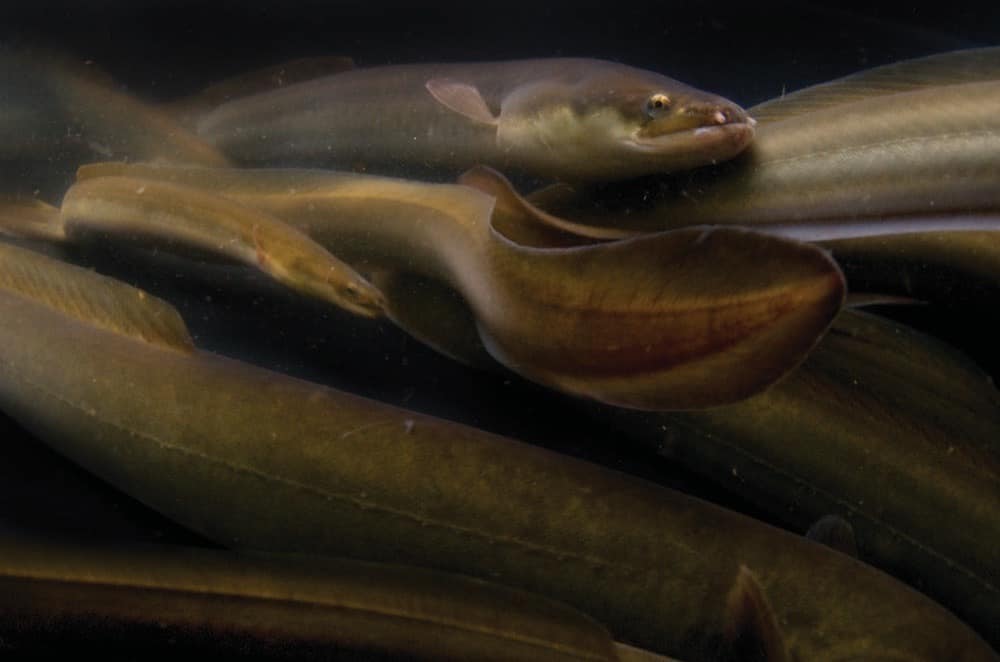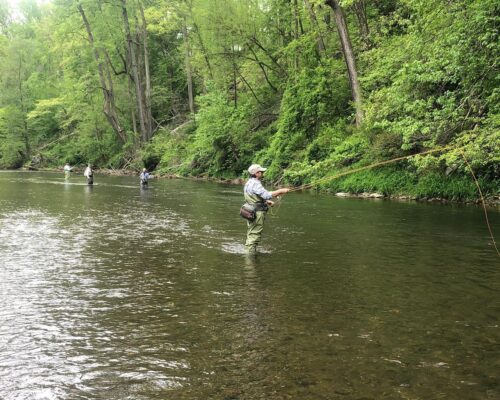It’s well before sunrise on a late November morning in Kent County, Md., and the skies have opened. My headlights are weak pinpoints in the almost biblical rain, which swallows any landmarks on my drive to the Turner’s Creek landing. I pull into the landing’s dark lot and sit, drinking the last of my coffee and working up the nerve to step out into the downpour. At 5 a.m., a pickup pulls alongside me and three watermen get out, unfazed by the weather. They start the engine on their workboat and help me aboard. The captain, Owen Clark, says this is going to be a good day to head out; rain this hard is perfect eeling weather.
Today I’m taking part in one of the Chesapeake Bay’s least-known fisheries. It’s also one of its oldest. The American eel (Anguilla rostrata) represents a resource harvested for millenia, first by the Chesapeake’s native populations. Along the shallow headwaters of undammed tributaries like the mighty Susquehanna, Potomac, and James, remnants of their extensive underwater eeling weirs can still be seen. Hundreds have been discovered in satellite imagery—ghostly submerged Vs of stone facing downriver, each built to funnel eels into a single point. There, they could be netted or speared and then smoked for preservation. The importance of eel to the indigenous diet still lingers in our language, too, in native place names like Shamokin (“eel creek”), Pa., or Swatara (“where we feed on eels”) Creek, near Harrisburg.

The European colonists also dined on eels, a familiar and welcome comfort food from home. Jellied eels and eel pie were standards of British cuisine, especially in London, where eels were abundant in the tidal Thames. The river-oriented homesteads and plantations that colonists established along Chesapeake waterways gave them ample access to the teeming population of American eel. Recipes from this period are remarkably creative, with guidance on how best to pickle, smoke, roll, boil and broil, stew, and collar them. Eel, it turns out, is surprisingly versatile.
The colonists had their own European methods for harvesting eel, using cylindrical woven rush pots with internal funnels to capture and contain the fish. These pots were used in the eel fishery for centuries, and they looked remarkably like the metal versions stacked in the back of Owen Clark’s workboat, Aluminator. The old ways are the best for catching eel, it seems.
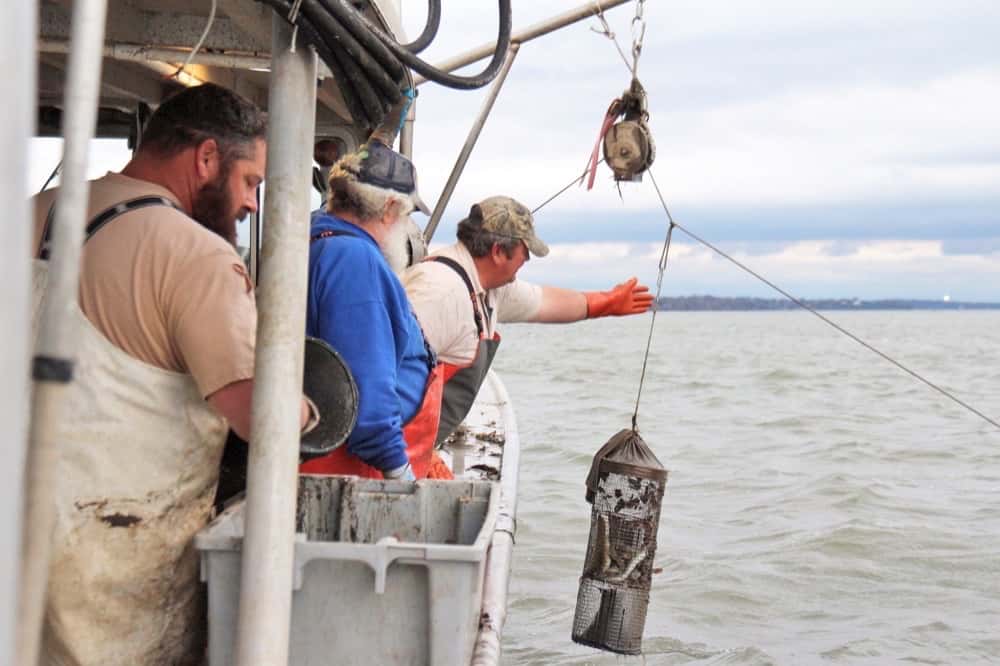
Today, Capt. Clark and his crew, Ashley Elburn and Andy Lloyd, are some of just a handful of eelers still working the Chesapeake. But why? If eel were so central to the Chesapeake cuisine of ages past, why isn’t eel pie a staple of Bay tables today, like crabcakes or oyster stew?
The answer lies in the power of water—to turn the works for grist mills, to spin turbines for hydropower. From the 18th century on, we systematically dammed our Chesapeake waterways to harness their natural energy. Today, the Susquehanna River watershed alone has 25 major dams. With each dam constructed, hundreds of thousands of immature eel were blocked from their natural habitat—the salt, brackish, and freshwater tributaries of the East Coast of the United States. Eel don’t always live in the Bay. They spend much of their lives in the Chesapeake but return one winter to the Sargasso Sea, two million square miles of warm water in the North Atlantic between the West Indies and the Azores. There, they mate, reproduce, and die, in a process that has long been a mystery to science.
Their offspring make an epic journey back to the American rivers where they will spend their adult lives, transforming along the way from drifting, leaf-shaped larvae to tiny, transparent glass eels. They continue to grow, developing into four-inch elvers as they reach their inland habitats. Before sexual maturity, they will pass through another stage, as yellow eel, and become nocturnal. After another three or four years, their color burnishes to silver as they complete sexual maturation and begin that long journey back to the Sargasso Sea of their birth.
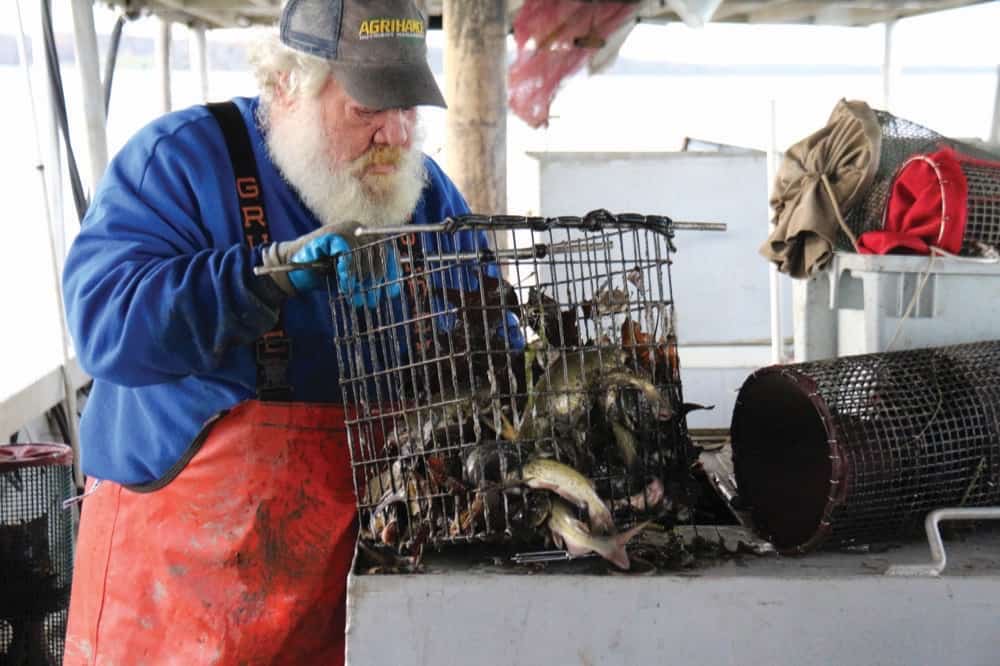
With their enormous range cut off by increasing dams, the eel population began to rapidly decline in the late 19th and early 20th centuries. As their numbers became scarce, other seafood such as crabs, oysters, salmon, and tuna were readily available in any season thanks to the rise of industrial canning. The demand for eels declined, though there was still a small fishery. No longer sought after as a food fish, eel were still valuable as bait. Salted and cut into small chunks, eel became the preferred bait of the crabbing industry, which boomed in the 20th century.
This is how I first met eel—in the late 1980s, on a picnic table while baiting the trotline with my father in preparation for crabbing the next day. And it was how Capt. Clark got his start as a boy, helping his uncle, who caught eel out of Rock Hall mostly for the crab bait market. Clark worked steadily through the 1990s, graduated high school, and eventually got a boat of his own. Today, he’s one of only a few eelers in Maryland (there’s another out of Rock Hall, and a couple in Kent Island). It’s a seasonal market, from early spring to late fall. Large silver eels can bring $2.50 to $3 per pound, and Clark will fish 250 pots today, 500 pots per day in summer. He’s hoping each pot nets a pound of eel; that’s the minimum he needs to catch to cover the cost of his crew, his gear, and his gas. Anything over that is gravy—money for his pocket and his family.
Clark keeps the Aluminator at Turner’s Creek on the Sassafras to gain access to his favorite fishing grounds, in the Elk and Bohemia Rivers. As the rain lifts, the four of us keep warm in the cabin while Clark navigates through the chop. We’re headed for a spot just below the Turkey Point light, where the Susquehanna Flats meet the mouth of the Elk River. Here, another waterman has set a catfishing trap, and Clark has an arrangement to set his eel pots alongside. Eel are attracted to the smell of the baited traps, which Clark hopes gives him an advantage.
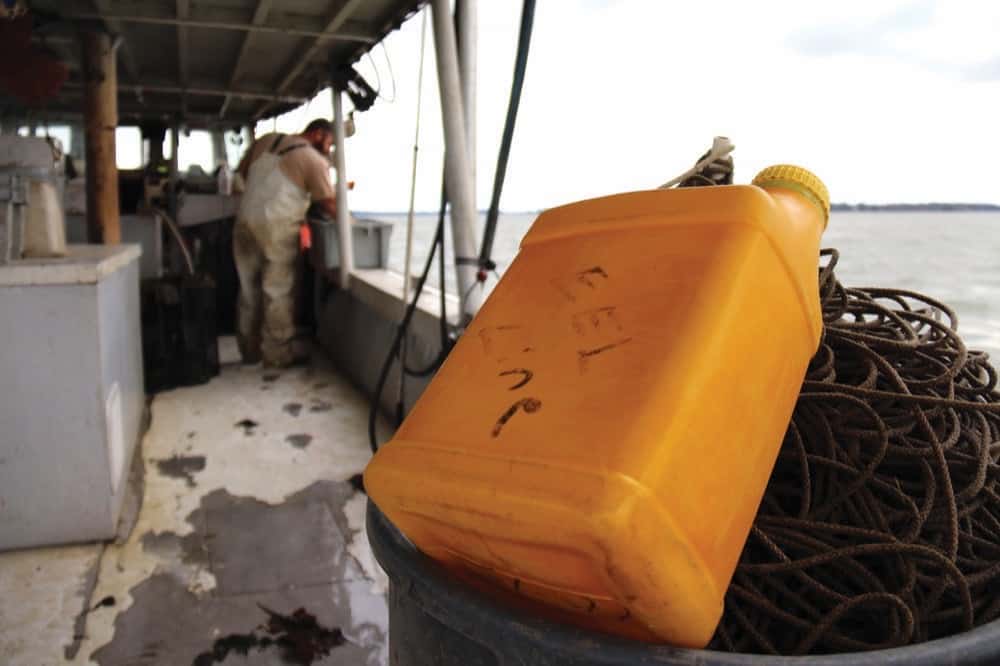
Clark starts winching in the eel pots on a long line, lit by a bright spotlight. This is a three-man process, with Clark bringing the pots up and handing them over to Elburn. Elburn sorts the catch, dumping the contents of the pots (a few eel, a lot of small bycatch) into a basket over a live well. The eel, sinuous and eager to get free, slither through holes in the basket into the well, and the bycatch—perch, catfish, a lot of mud crabs—gets thrown back overboard. Finally, Lloyd takes the empty pot, baits it with a chopped-up chum of horseshoe crabs, and stacks it in the back, ready to be reset.
The day’s catch is not starting out strong. Large eels are few and far between. “It’s not a good day,” Clark says. “Like my report card used to say—needs improvement.” We leave Turkey Point’s lighthouse shining behind us as we head up the Elk to check the next set of traps. Back in the cabin, Clark offers everyone a snack—his stash is abundant, with lots of options (I stick with classic Toast Chee crackers)—and we start talking about the glory days of eeling in the 1990s.
Long just a bait fish, eel had a brief renaissance in the ’90s as the East Asian markets, particularly in Japan, caught on to the relative cheapness and abundance of American eel. Asian eel was highly valued as a food fish but the native stocks had been heavily depleted. The Japanese demand for exported American eel, largely for use in sushi, created a mini-boom for the eel fishery. It also raised prices on American eel as a bait fish, forcing the crabbing industry to rely on cheaper alternatives like bull’s lips and razor clams.
The boom didn’t last. By the 2000s, the Japanese had developed an aquaculture process to raise elvers in captivity to mature size. Glass eels for export and finishing to adulthood were in hot demand, but as they are protected in most states along the East Coast (Maine and South Carolina are the two exceptions), the eel gold rush was effectively finished for watermen like Clark. Today, there’s not a strong U.S. food market for mature eel; confoundingly, those same American glass eel exported to East Asia aquaculture firms are usually then re-exported back to meet the demand for sushi. So Clark is back to his steady work, seeking the biggest eels he can catch. “All this talk of sushi is making me hungry,” Clark says. He sticks his hand back into the snack bag and rummages around for something to take the edge off.
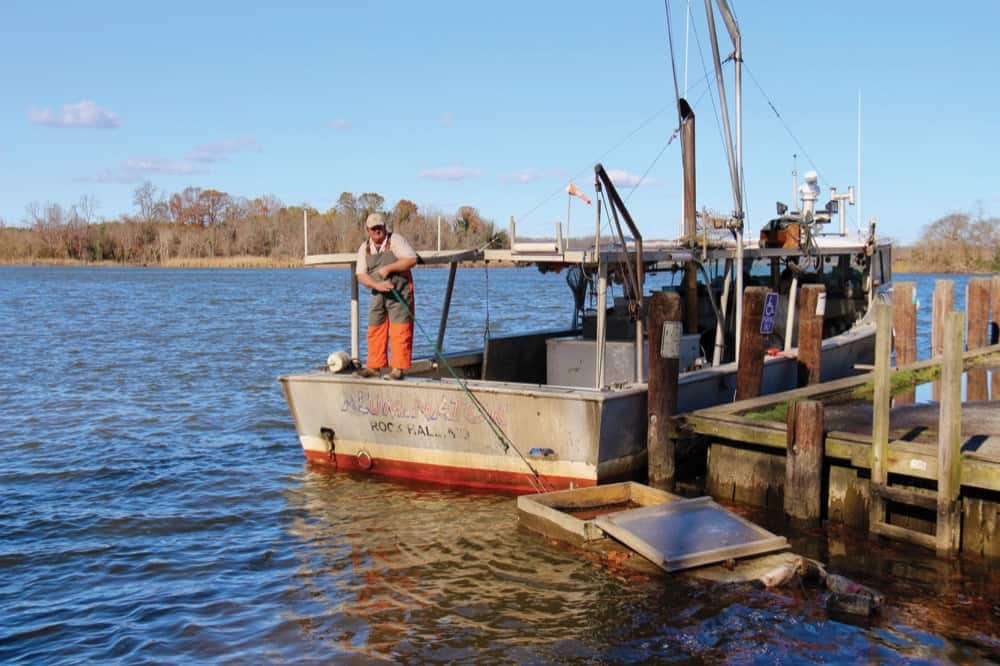
We strike gold on the Elk River. Each pot is crammed with eel, their pointed heads and curiously observant little eyes dangling from the pots, fins poking out on the other side. The three watermen are a machine: lift, dump, bait, stack, repeat. It’s a damp, cold, blustery day, but they don’t feel it in t-shirts. I add another layer over my foul weather gear.
By 1 p.m., the pots have been checked, the eel added to the full live well, the pots baited and stacked, and we return to the Sassafras. It’s been a good day after all. Clark seems pleased. His wholesaler, Delaware Valley Fish Company, will pay $2 per pound of small eels and $3 per pound for large, and there are some behemoths swimming around in the live well. Once at the dock, a truck pulls up alongside Aluminator. The live well contents are pumped into dockside holding tanks, where they’ll be netted up into the truck’s storage containers. The eel—olive, silver, a river of life—flood out in a rush of water. Before I leave, Ashley Elburn kindly offers to let me hold an eel for a picture. “Careful!” he says. “It’ll bite and draw blood!” I take the soft, slimy, surprisingly muscular creature in my hands. It is a remarkable fish, a creature of the night, able to climb over obstacles and breathe through its skin. It thrashes, but doesn’t bite.
Back home, I text Clark to say thank you for the adventure and then crash. When I wake up, shaking off dreams full of eels and cold wind and Toast Chee crackers, I’ve gotten a reply text back. It’s a photo from the lunch that Clark and his crew treated themselves to after work: sushi.

